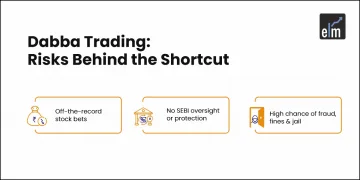Momentum trading is a type of trading strategy that profits from sharp and quick changes in a security’s underlying price. When securities are rising, traders will look to buy them, and when they are falling, they will look to sell them.
The market price typically rises when an asset increases because traders and investors become more interested. This keeps happening until a lot of sellers come into the market.
Once enough buyers are in the market, the momentum shifts and lowers the asset’s price. Momentum is essentially the rate of change in an asset’s market value.
So, in today’s blog, let us discuss how to do Short term momentum trading and some momentum trading strategies as well:
What is Momentum Trading?
In a momentum trading strategy, an asset that exhibits a significant change in price or volume is purchased by the trader. When there is a clear upward trend or increases in the price of the stock or asset, the investor buys it.
They engage in trading to benefit from inflated price movement that follows the prevailing trend. It frequently compares patterns in more traditional financial markets, such as those for currencies, bonds, and commodities.
By buying short-term positions in assets that are rising and selling them as soon as they begin to fall, short term momentum trading is a trading strategy that takes advantage of market volatility. The funds are then moved to the new position. It is a very successful method of trading.
Types Of Momentum Trading Strategies
Let us discuss some of the momentum trading strategies that traders can use when trading in the stock market:
1. Breakout Strategy
Breakout stocks are those shares that move beyond their support or resistance level. A key concept in technical analysis, i.e., breakouts, can indicate that a stock is about to make a major move.
So, if a stock moves above its resistance level, then it will generally go on to make a sustained upward move. If it goes past its support level, then it may go on a bear run.
Support and resistance levels are often considered ‘stronger’ if a stock hits them multiple times. In turn, stocks that break through these ‘stronger’ levels often show significant moves.
Stocks are not the only assets that break beyond support and resistance levels. Any financial assets, be it commodities, forex, or cryptocurrencies, can have breakouts from necessary support and resistance levels.
2. Contrarian Strategy
Contrarian trading, as the name suggests, is a strategy that involves defying current trader sentiment. The fundamentals of contrarian can be applied to specific stocks, an entire industry, or even whole markets.
A contrarian trader trades when others are feeling pessimistic about the market. The contrarian thinks there is an opportunity because the market or stock is valued below its intrinsic value.
In other words, excessive pessimism on the part of other investors has driven the stock’s price below where it ought to be. The contrarian trader will buy that before the general mood changes, and the share prices recover.
3. PullBack Strategy
A pullback is a pause or moderate dip in the price of a stock or commodity that occurs within a continuing advance.
A pullback is almost the same as retracement or consolidation. The phrase “pullback” refers to price declines that last for a short period of time – say, a few successive sessions – before the uptrend restarts.
After security has undergone a big upward price movement, pullbacks are commonly viewed as buying opportunities.
For example, after a strong earnings report, a stock may see a big surge before reversing as traders with existing positions profit. Positive earnings, on the other hand, are a fundamental signal that the stock will continue to rise.
You can learn more about momentun trading through our course on Masterclass on Short-term Momentum Trading
Before restarting their uptrend, most pullbacks see a security’s price move to a technical support level, such as a moving average or pivot point. Traders should keep a close eye on these critical support levels, as a break below them could suggest a reversal rather than a retreat.
You can also watch our video on Momentum Trading
Bottomline
As we have discussed, the main goal of momentum trading is all about buying higher and selling higher. It is one of the most used strategies among investors. We hope you found this blog informative and use it to its maximum potential in the practical world. Join our momentum masterclass to understand the concept in detail. Also, show some love by sharing this blog with your family and friends and helping us in our mission of spreading financial literacy!
Happy Investing!






